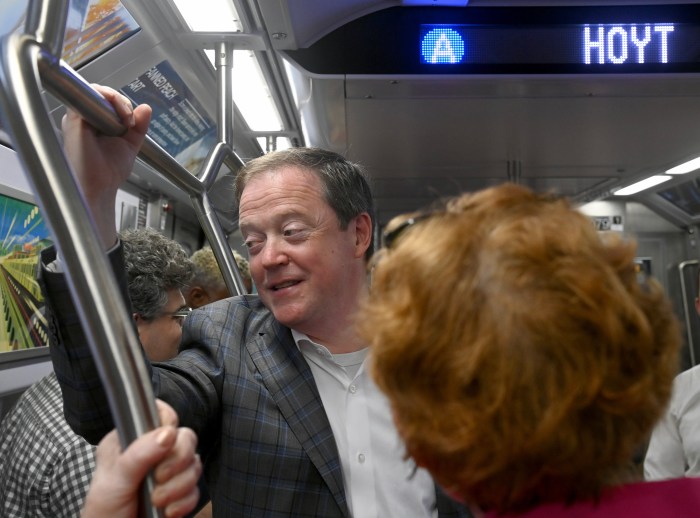
Mayor Bill de Blasio announced a $100 million increase in the police budget this week to hire 1,300 additional NYPD officers. The new officers will be deployed using what de Blasio calls a “pioneering neighborhood policing strategy.” They will not respond to 911 calls. Instead the officers will “have time” to “engage with the community,” according to Police Commissioner William Bratton.
After the high-profile deaths of unarmed black men at the hands of police, the #BlackLivesMatter movement and others have been calling for reform, but neighborhood policing is not the change we need and it is hardly “pioneering.” Its feel-good name and seemingly progressive philosophy elide how the new program will push more money toward an already over-funded NYPD, do nothing to stop racially targeted broken-windows policing, and further enmesh the police in the daily lives of New Yorkers who need jobs and schools, not more cops with guns and arrest powers.
The patrol plan redeploys police, taking them out of specialized units like narcotics squads and has them regularly patrol one neighborhood.
Officers are supposed to talk with community members, partner with businesses, and work with social service providers to solve community problems.
This might sound like a welcome change to an arrest-based approach, but history shows that neighborhood-policing funding is often rerouted to more repressive tactics and even when implemented, the approach asks police to do work for which they are ill prepared.
In the 1990s, Mayor David Dinkins tried this patrol strategy (then called “community” policing, but very similar to the current approach). His “Safe Streets, Safe City” initiative raised property and income taxes to fund 6,000 new community policing officers.
By the time the officers were hired and trained, however, there was a new mayor. Rudy Giuliani abandoned community policing, using the extra officers to staff stop-and-frisk policing and increase broken-windows arrests. Bratton was Giuliani’s first police chief in 1994 and he oversaw the end of Dinkins’ approach.
Overall crime rates have been falling in New York since the Dinkins era, but the police budget has not reflected this happy change. The murder rate in 2012 (the most recent year with data) was one-sixth its 1991 high, but the police budget rose from $3 billion to $5 billion (adjusted for inflation) during that time. Some would say that a large police force deters crime, but crime went down in cities that did not increase their police force size, and certainly at some budget level we must stop the spending. We can cash in the public safety dividend and the money we save can be spent on schools, hospitals, and housing: things that stop crime before it happens.
Despite the historically unprecedented budget size, City Council Speaker Melissa Mark-Viverito and de Blasio are using neighborhood policing to justify more spending. Mark-Viverito said earlier this year that the new patrol plan “requires more resources, not less.” De Blasio’s budget announcement justified the new hires by citing this “new” strategy.
Under the new neighborhood policing initiative, police are partnering with homeless, mental health, and domestic violence services. Police are diverting people who would otherwise be charged with a minor violation to these service providers. While keeping people out of jail is no doubt an important step in providing help, it is not clear why the police department needs to be involved at all. The NYPD is designed to arrest and intimidate people, not to help them. This was thrown into sharp relief in April, when an NYPD detective fatally shot 24-year-old David Felix, an unarmed mentally ill man who police said had attacked two officers.
Neighborhood policing turns problems like homelessness and mental health into police problems, increasing the likelihood they will be addressed with violence and arrests. The city officials who support the new program are too narrowly focused on police solutions to social problems.
De Blasio is hoping neighborhood policing will heal the community-police divide after the deaths of Eric Garner in Staten Island and Akai Gurley in Brooklyn. A look at history and the budget, however, suggests the new plan will be more of the same. We have let our police spending grow too large, we have allowed broken-windows policing to incarcerate too many, and we have placed too much faith in police to solve social problems.
We do not need neighborhood police, we need fewer police.

















